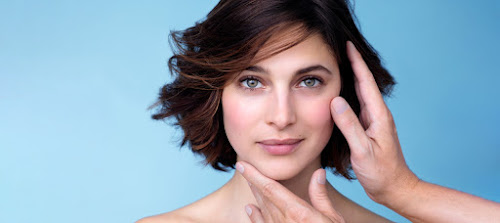definition of beauty
Charm is the ascription of a residential or commercial property or particular to a pet, concept, item, individual or location that offers a perceptual experience of enjoyment or complete fulfillment. Charm is examined as component of visual appeals, society, social psychology and sociology. An "suitable charm" is an entity which is appreciated, or has functions commonly associated to charm in a specific society, for excellence. Ugliness is the contrary of charm. Tips Mendapatkan Jackpot Saat Bermain Judi Slot
The experience of "charm" frequently includes an analysis of some entity as remaining in stabilize and consistency with nature, which might result in sensations of tourist destination and psychological wellness. Since this could be a subjective experience, it's frequently stated that "charm remains in the eye of the observer."[1] Frequently, provided the monitoring that empirical monitorings of points that are thought about gorgeous frequently line up amongst teams in agreement, charm has been specified to have degrees of objectivity and partial subjectivity which are not completely subjective in their visual judgement.
The classic Greek noun that finest equates to the English-language words "charm" or "gorgeous" was κάλλος, kallos, and the adjective was καλός, kalos. Nevertheless, kalos might and is likewise equated as ″good″ or ″of great quality″ and therefore has a wider implying compared to simple physical or product charm. Likewise, kallos was utilized in a different way from the English word charm because it firstly used to people and births an sensual connotation.[2]
The Koine Greek word for gorgeous was ὡραῖος, hōraios,[3] an adjective etymologically originating from words ὥρα, hōra, implying "hr". In Koine Greek, charm was therefore connected with "being of one's hr".[4] Therefore, a ripe fruit (of its time) was thought about gorgeous, whereas a young lady attempting to show up older or an older lady attempting to show up more youthful would certainly not be thought about gorgeous. In Attic room Greek, hōraios had numerous significances, consisting of "younger" and "ripe aging".[4]
The earliest Western concept of charm could be discovered in the functions of very early Greek philosophers from the pre-Socratic duration, such as Pythagoras. The Pythagorean institution saw a solid link in between mathematics and charm. Particularly, they kept in mind that items proportioned inning accordance with the gold proportion appeared much a lot extra appealing.[5] Old Greek style is based upon this see of balance and percentage.
Plato thought about charm to be the Concept (Develop) most of all various other Concepts.[6] Aristotle saw a connection in between the gorgeous (to kalon) and merit, suggesting that "Merit targets at the gorgeous."[7]
Classic viewpoint and sculptures of women and men created inning accordance with the Greek philosophers' tenets of suitable human charm were rediscovered in Renaissance Europe, prominent to a re-adoption of what ended up being referred to as a "classic suitable". In regards to women human charm, a lady whose look adheres to these tenets is still called a "classic charm" or stated to have a "classic charm", whilst the structures laid by Greek and Roman musicians have likewise provided the basic for man charm and women charm in western world as seen, for instance, in the Winged Success of Samothrace. Throughout the Gothic age, the classic aesthetical canon of charm was declined as wicked. Later on, Renaissance and Humanist thinkers declined this see, and thought about charm to be the item of logical purchase and unified percentages. Renaissance musicians and designers (such as Giorgio Vasari in his "Lives of Musicians") criticised the Gothic duration as unreasonable and barbarian. This viewpoint of Gothic art lasted up till Romanticism, in the 19th century.


